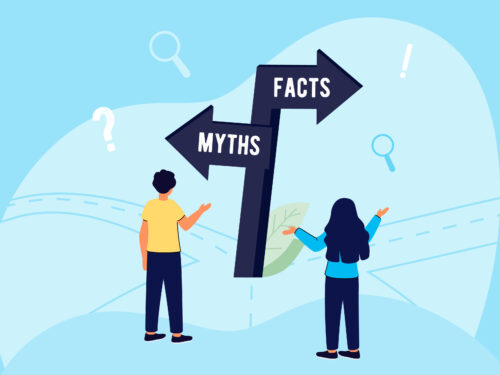
There are a lot of myths and misinformation about diabetes, a condition that impacts millions around the world. It’s time we bust the myths and learn the truth about diabetes.
Firstly, it’s important to understand the differences between the types of diabetes. Type 1 diabetes is an autoimmune condition where the immune system destroys the insulin-producing cells in the pancreas. This means people with type 1 can’t make the insulin they need to live.
On the other hand, type 2 diabetes is a metabolic condition where the body doesn’t respond to insulin or isn’t producing enough insulin to keep blood sugar levels in the normal range. People with type 2 diabetes need to be proactive about controlling their blood sugar through a healthy diet and staying active. However, it’s important to note that type 2 diabetes is a progressive condition. Over time, many people will need to start taking tablets and eventually insulin to manage it.
In this article, Diabetes NZ, has separated right from wrong, busting myths and replacing them with the truth about diabetes. We hope this will help everyone understand diabetes better.
Whether you or someone you know is dealing with diabetes, you’ve probably heard some throwaway comments that miss the mark completely. By tackling these myths head-on and learning the truth about diabetes, we hope to reduce the stigma for those living with this condition. So, let’s dive into some of the most common myths and learn the facts.
Myth: Diabetes can be cured
One of the biggest misconceptions is that diabetes can be cured. The truth is there’s currently no cure for diabetes. While there is a lot of research going on in the field of finding a cure for type 1 diabetes, type 2 diabetes can sometimes be prevented or put into remission through lifestyle changes. Gestational diabetes can be managed by addressing risk factors, it cannot be cured outright.
Myth: Diabetes isn’t life threatening
Diabetes can have very serious, even life-threatening consequences. For people with type 1 diabetes, when they take insulin, they are at risk of low blood sugar levels (hypoglycaemia), which can be dangerous. For both type 1 and Type 2 diabetes, high blood sugar levels for long periods of time can cause serious damage to various parts of the body, leading to complications like blindness, amputations, kidney failure or heart attack. For women with gestational diabetes, high blood sugar levels can cause serious health problems for both the pregnant woman and the baby.
Myth: It’s your own fault you have diabetes
Nobody chooses to get diabetes, regardless of the type. Diabetes isn’t directly caused by a person’s actions. It’s a complex condition with many different types and stages, and there are numerous contributing risk factors. Type 1 diabetes is linked to genetic and environmental factors and is an auto immune condition. Type 2 diabetes is connected to age, ethnicity, family history and lifestyle factors. Gestational diabetes is also linked to family history, but it can affect women with no known risk factors.
Myth: Only overweight, lazy people get diabetes
This is a harmful stereotype that only people with excess weight or inactive people get diabetes. In reality, diabetes doesn’t discriminate by weight or lifestyle. While type 2 is linked to weight, lifestyle, and genetics, type 1 diabetes isn’t connected to these factors at all. This just shows how complex the condition is and challenges these damaging stereotypes.
Myth: Diabetes only affects old people
Think diabetes is just for older people? Think again. Type 1 diabetes can occur at any age from birth, and type 2 diabetes has been diagnosed in children as young as six. Gestational diabetes can develop during pregnancy regardless of age. This emphasises the need for diabetes awareness across all age groups.
Myth: Too much sugar causes diabetes
Let’s bust the myth that sugar is the sole villain here. Comments like, ‘You get diabetes from eating too much sugar’, or ’Should you be eating that?’ are not only wrong but also hurtful. Sugar doesn’t cause type 1 diabetes at all and isn’t solely to blame for type 2 or gestational diabetes. It’s crucial to understand the various risk factors that contribute to diabetes and promote overall health and a balanced diet. Eating a lot of sugar and carbohydrates, which break down into glucose in the body, can increase the risk of developing type 2 diabetes and make it harder to manage blood glucose levels.
Myth: People with diabetes can’t eat sugar
Contrary to popular belief, people with diabetes don’t have to swear off sugar entirely. For those with type 1 diabetes, sugary treats can be lifesavers during a hypo, when their blood glucose levels drop dangerously low. For all types of diabetes, including type 2, it’s all about moderation. Sugary treats can fit into a balanced diet occasionally with the right portion sizes and healthy lifestyle choices.
Get tested
Awareness is key. Know the symptoms, understand your risk, get tested, and encourage others to do the same. You can easily find out your risk for diabetes with Diabetes NZ’s online Know Your Risk quiz at www.diabetes.org.nz/know-your-risk.
To find out more about Diabetes Action Month, visit www.diabetesactionmonth.org.nz.
Article sources and references
- Learn the truth about diabetes | Mate huka, Diabetes NZhttps://www.diabetes.org.nz/diabetes-myths
- Diabetse Mythbusters, Diabetes NZhttps://www.diabetesactionmonth.org.nz/diabetes-mythbusters
www.myeverydaywellbeing.com












